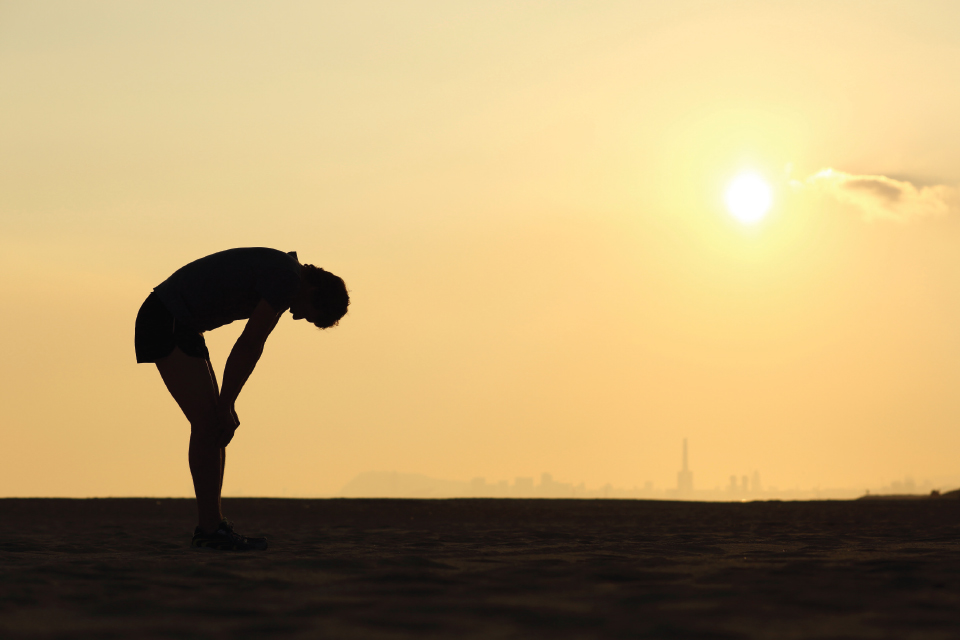Postural Restoration and the Automatic Nervous System

Part I: Things to Remember
The Autonomic Nervous System (ANS) controls and fine tunes many important physiological functions like heart rate, breathing patterns, and the regulation of stress hormones and metabolites—which are essential when preparing an athlete for activity.
A properly functioning ANS helps the human machine rest when it’s time to recover.
Postural Restoration
Ron Hruska, founder of The Postural Restoration Institute in Lincoln, Nebraska, is a physical therapist who recognized common postural patterns in his patients that caused a variety of musculoskeletal and neuromuscular problems. He found that these patterns, essentially based on the asymmetrical nature of the human body, could be addressed through an understanding of the likelihood that one’s body becomes rigid and less adaptable the more one is driven by an over-stimulated or imbalanced autonomic nervous system. Rigidity can be thought of in terms of posture (increased muscle tone) as well as a lack of ability to flip from a stimulated to a relaxed state. Through objective testing, a PRI-trained therapist or strength coach can recognize the patterns of a poorly adapting patient or athlete.
Contrary to most methods of rehabilitation, this practice appreciates that the presentation of an athlete or patient—their posture and gait, range of motion, breathing pattern, sensitivity to pain and other stimuli—is, in part, a reflection of the state of their nervous system and the ANS in particular. This understanding helps guide the therapist or coach in developing a treatment or training program for the athlete.
Postural Restoration examination of a sympathetic-dominant patient shows that with an altered breathing pattern, neck and back muscles are unable to relax upon inhalation and exhalation in conjunction with poor abdominal activation. There is also increased muscle tone throughout the body, resulting in multiple areas of reduced range of motion and a greater tendency towards an asymmetrically positioned pelvis, trunk, and rib cage. Essentially, the body becomes more rigid and less able to move reciprocally from one side to the other.
An important PRI principle is that humans are biased towards their right sides—regardless of hand dominance—because of the lateralization of the brain. It is well-known that certain tasks and specializations originate on separate sides of the brain, and a PRI-trained therapist will use common orthopedic, neurological, and respiratory tests to determine how lateralized the patient or athlete has become.
Treatment
A Postural Restoration therapist uses information like static position or posture, movement and gait patterns, the depth and rate of breathing, and even the degree of sensitivity to pain to help establish the influence of the nervous system. PRI principles hold that since the human body is not symmetrical—think of organ placement, the shape of the diaphragm and lungs on either side of the body, and the left-versus-right functions of the brain—there will always be a tendency towards lateralization, or the preference for certain activities to be done differently on one side of the body than on the other. In a calm state, humans are able to overcome lateralized tendencies and easily reciprocate with alternating movement. There are many examples of how the body is challenged by this, especially in a stressed state.
Important characteristics of patients who exemplify a stressed state or dominant sympathetic nervous system (the system responsible for our “fight or flight” response) include:
– A rapid and shallow breathing pattern
– Increased heart rate lacking rate variability
– Reports of stress and anxiety
– Fitful sleep and increased fatigue
– Poor recovery following workouts
– Slower healing of injuries.
Athletes affected by a dominant sympathetic nervous system may also report that their fitness has plateaued or even decreased, or that they feel overtrained and unable to recover due to injury or fatigue—a catabolic state where breakdown is occurring faster than repair.
Key Takeaways
Sympathetic control is the foundation upon which power and performance is later realized.
Most of the time, our bodies need to function more toward the parasympathetic (“rest and digest” or “recover and repair”) end of the spectrum. This is the autonomic state in which your body is more rested, has steady state function of multiple organ systems—cardio-respiratory, digestion, urogenital—and can repair and heal itself. It is vital for an athlete to be able to get his or herself into a parasympathetic state as soon after a workout or competition as possible.
Human performance and the human experience are enhanced when stress is controlled and movement variability is possible. Parasympathetic dominance is key to realizing this. The key to well-functioning parasympathetics is being able to control common problems like over-breathing and hyperventilation. Postural Restoration therapists recognize telltale signs like rib-flaring, deep lower backs, and overactive anterior necks as characteristics of a lack of parasympathetic control and the ANS in general. Posture and movement rigidity are soon to follow and non-traumatic and potentially traumatic injuries are the inevitable result. Learning proper breathing mechanics and strategies to control breath during daily activities will go a long way in maintaining a more balanced autonomic nervous system. afm
*Steve Cuddy was voted as one of the best physical therapists in Austin in AFM’s Best Of cover story.






